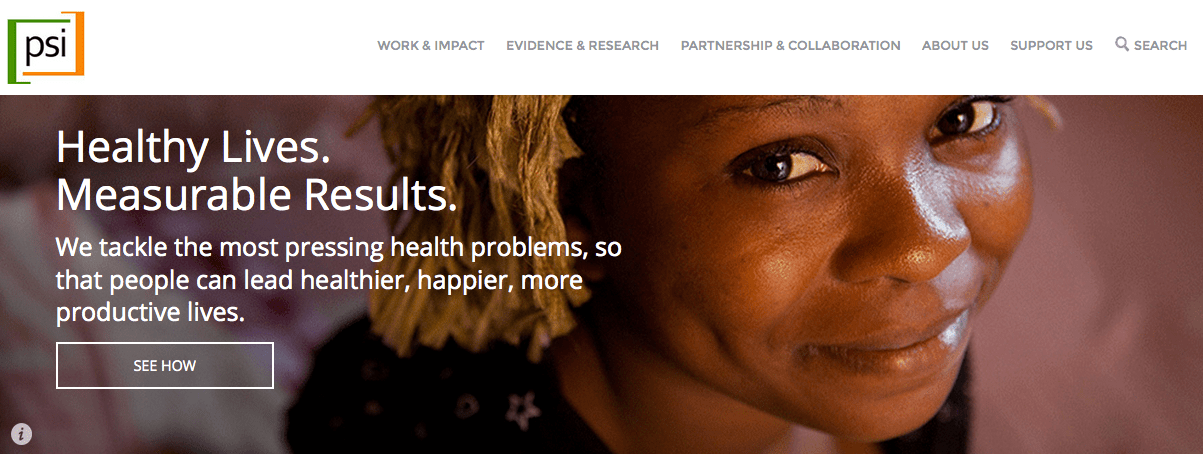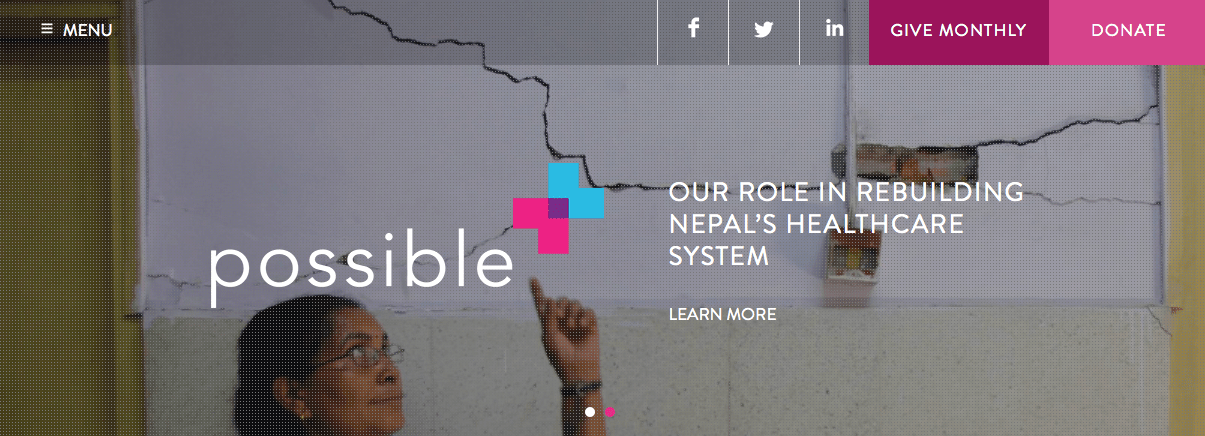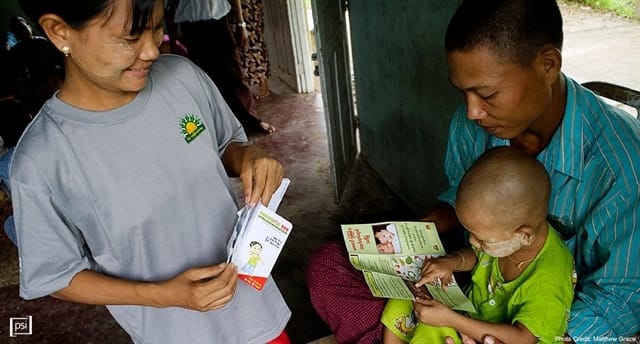You've decided to give to charity, and you want to do as much good as you can with your money. But browsing through our recommended charities, you have sixteen options to choose from! Granted, it's much easier than choosing one of the more than one million charities in the United States alone, but it's still a lot of options. Besides, what issue do you think is most important: hunger? Disease? Medical services?
I can't answer these questions for you, but now in my third year of effective altruism, I've given away a good chunk of change and have done a lot of thinking about how to do that. In that time, I've given to eleven different charities recommended by The Life You Can Save, but in recent months, I've narrowed that down to four favorites. I'll tell you how I got there and give you some tips on finding and supporting your favorite organizations.

Visit GiveDirectly's website, and it won't be difficult to see why I love this organization. As their landing page says, GiveDirectly allows you to "send money directly to the extreme poor." Countless studies and anecdotes have shown that giving impoverished peoples the means and autonomy to create their own solutions to the issues in their local economies is much more effective than traditional direct aid. GiveDirectly locates extremely poor communities and households in Kenya and Uganda, then uses modern technology that sends money (around $1000 USD, about a year's budget for one household) directly to these people with very little overhead cost.
As I was attracted by this idea of connecting directly with the recipients of my donations, one of my first forays into charitable giving as Kiva.org, which allows its users to send microloans to entrepreneurs in developing nations.
But after learning that Kiva's not quite as clear and honest as it seems , I discovered that GiveDirectly is the opposite: simple, transparent, and effective.
34% of recipient households see an increase in earnings; 52% see an increase in assets, and there is a 42% reduction in days children go without food.
Why is GiveDirectly important to me? Because rather than giving food or assets to the poor, this program gives them the tools to better their lives, and the evidence proves that when you give people the tools to do that, that is exactly what they do.
Why is GiveDirectly important to me? Because rather than giving food or assets to the poor, this program gives them the tools to better their lives, and the evidence proves that when you give people the tools to do that, that is exactly what they do.

Fistula Foundation is the largest private charitable foundation supporting obstetric fistula treatment on a global scale.
Obstetric fistula is a life-altering condition caused by obstructed childbirth: a fistula, or hole, is created between the vagina and the rectum or bladder, causing incontinence.
This happens primarily in low-resource communities where women must give birth without access to medical assistance.
Obstructed labor can take up to seven days, but the pain lasts many years beyond that, as women with fistula are often rejected by their husbands and communities due to the foul smell caused by their condition.
If this seems like a horror story to you, here's the kicker: more than one million women around the globe suffer from obstetric fistula, yet fewer than 16,000 receive treatment each year. That's just three of every 200 women in need, but Fistula Foundation is changing that, one life at a time.
They do that by supporting local surgeons, hospitals, and advocates throughout the world who know what they are doing and do it well. As fistula surgery is incredibly complex and mostly eradicated in the developed world, a major obstacle to fistula treatment is the lack of suitably trained surgeons. To that end, Fistula Foundation has partnered with the International Federation of Gynecology and Obstetrics (FIGO) to offer the world’s first Fistula Surgery Training Fellowship, a 6-8 week program offered at accredited training centers throughout Africa, designed to give surgeons the tools to return home and serve the women of their communities.
Because of Fistula Foundation's small and efficient staff, they have an incredible amount of flexibility and responsiveness. Not only does the Foundation support surgeons, but they also react quickly to the needs of their partners: like deploying motorcycle ambulances in Senegal, or improving clinic infrastructure in Afghanistan. Serving 30 countries throughout Africa and Asia, Fistula Foundation has given more than 10,000 women their lives back. Don't believe me? You can check all their stats, financials, and even tax returns right here.
Population Services International (PSI)
 PSI focuses on the world's most pressing health problems, from sanitation to gender-based violence to child health, providing services and education that empower impoverished communities around the world to take ownership of their lives and families. With nearly 9,000 local partners in more than 65 countries, PSI has mastered the art of networking.
PSI focuses on the world's most pressing health problems, from sanitation to gender-based violence to child health, providing services and education that empower impoverished communities around the world to take ownership of their lives and families. With nearly 9,000 local partners in more than 65 countries, PSI has mastered the art of networking.
A major part of PSI's impact strategy is motivating people to adopt healthier behaviors, and they do that with communication strategies designed for each country where they work:
Like a company uses the latest market research to develop campaigns to sell a product, we do the same with our health communications. Through consumer research, we determine which method of communication, –such as radio, billboards, television, or one-on-one outreach or aggressive promotion using the latest in digital media – will be most effective. We also study behaviors, motivators, barriers, and other things that may influence decisions about health.
Business-savvy altruists will appreciate PSI's relentless search for more and better ways to make people healthy. Rather than specializing in one field or treatment, "PSI uses a human-centered approach to understand what motivates someone to adopt a health solution, and then we get the product or service to them in a way they understand, at a price they can afford and in a place that is convenient." These and other social marketing strategies set PSI apart from less-effective charities that might, for instance, simply give away condoms to everyone in a community in need. In Cambodia, PSI has segmented that market, maximizing development aid by educating those who can afford condoms, subsidizing those who can pay only little, and giving away condoms for those in greatest need.
Because of PSI's rigorous research and incredible breadth of impact, I feel comfortable giving and knowing that my money is going to programs that are most in need, in ways that will be most effective. Less than $36 USD provides a year of healthy living for a mother and her child, and in PSI's hands, those $36 are well spent.

Possible delivers high-quality, low-cost healthcare to the poorest people in rural Nepal. Possible utilizes a "hub and spoke" model for creating healthcare units: a central hospital serves as both a treatment facility and an education center, and clinics encircling the hospital act as primary care and follow-up facilities nearer to their patients' homes. Additionally, community healthcare workers move between homes providing referrals, follow-ups, and general health education for the community.
How does Possible do it? With a model they call Durable Healthcare: "a public-private partnership that enables a nonprofit healthcare company to be paid by the government to deliver healthcare within the government’s infrastructure." CEO Mark Arnoldy explains:
This design brings together the best assets of each sector: the government finances and provides infrastructure, we bring management acumen and only get paid if we deliver outcomes. Most importantly, because we are a nonprofit healthcare company, we only need to achieve cost recovery, not profitability. That changes everything. It allows us to go where no private company would see opportunity and use the combination of government funding and philanthropy to build a system that works fully for the poorest.
There are so many reasons to love Possible, and a big one for me is the incredible tenacity with which everyone on Possible's team works toward their collective goals, like building Nepal's leading rural teaching hospital, and rebuilding healthcare infrastructure in the Dolakha District, near the epicenter of the May 12th earthquake. Scroll through Possible's Culture Code and you'll see why they've been able to treat more than 250,000 patients since 2008 – at a price point of less than $14 per patient in the most recent quarter.
After three years and dozens of charitable gifts, I've settled on these four favorites because of both what they do and how well they do it. By focusing on one charity or issue area, your continued support can make a real and measurable impact in the lives of many. But if you haven't yet decided what matters most to you, don't worry: in supporting a highly-effective charity, no matter what it is, you're already making a big difference in our world.



